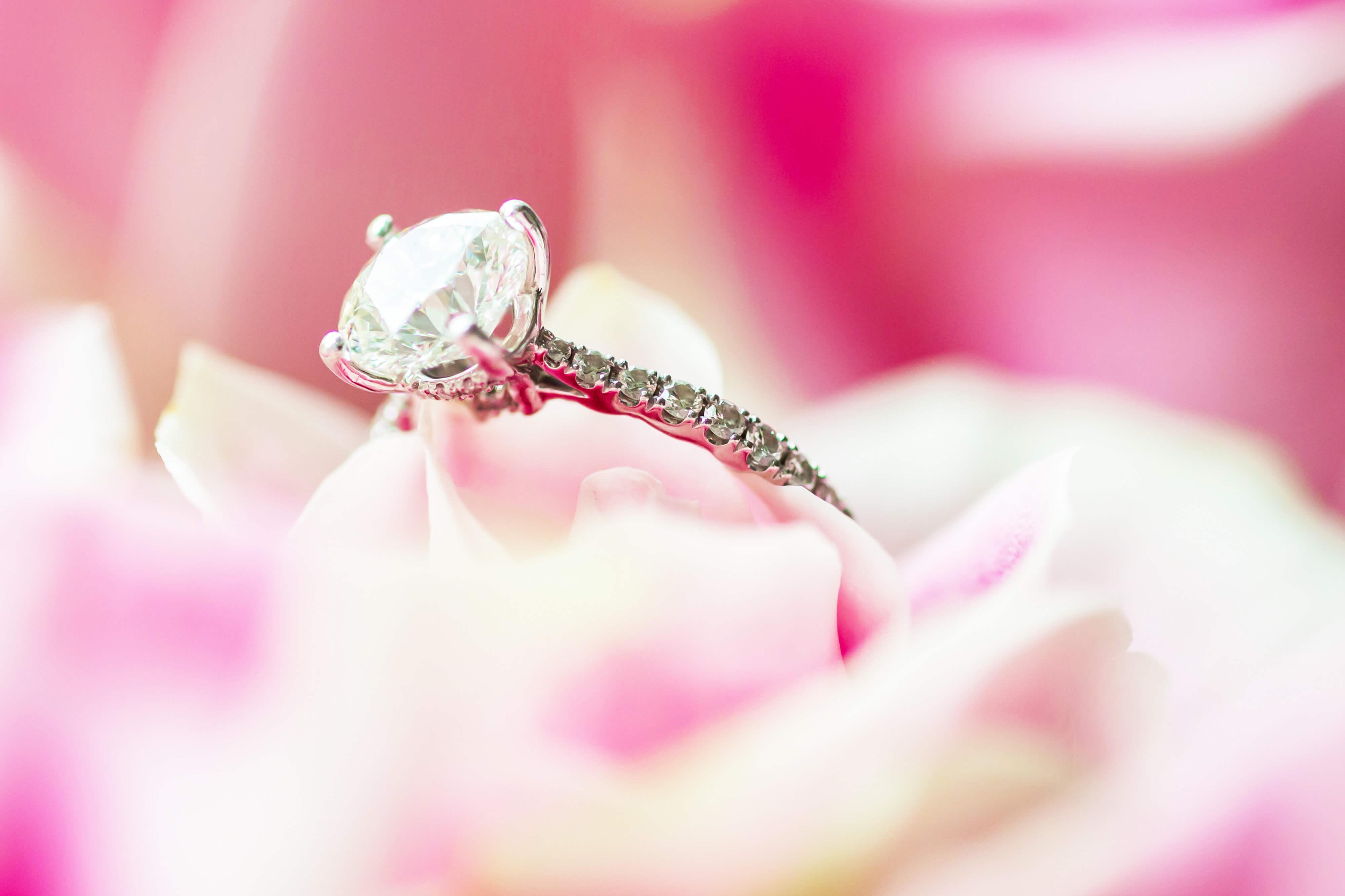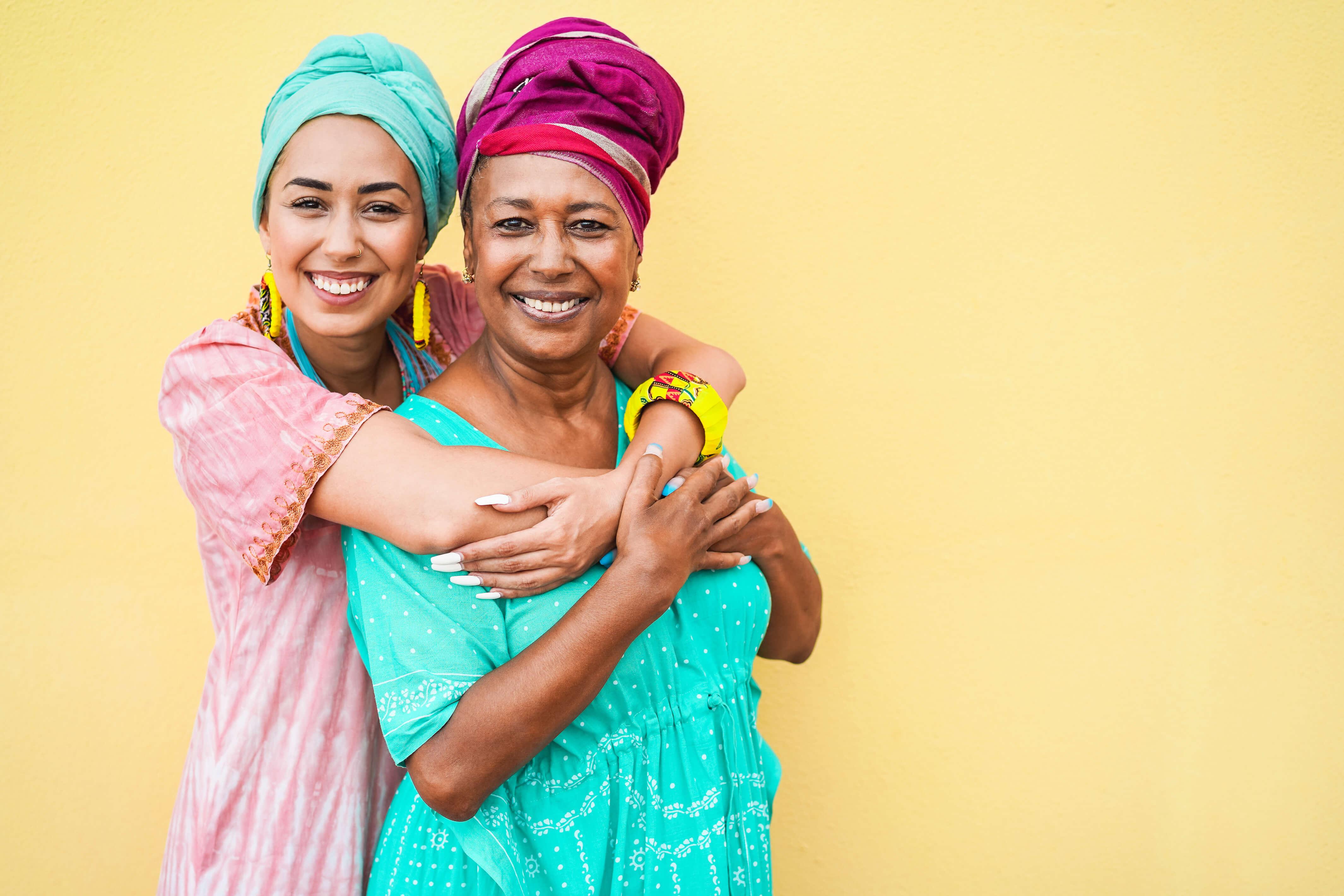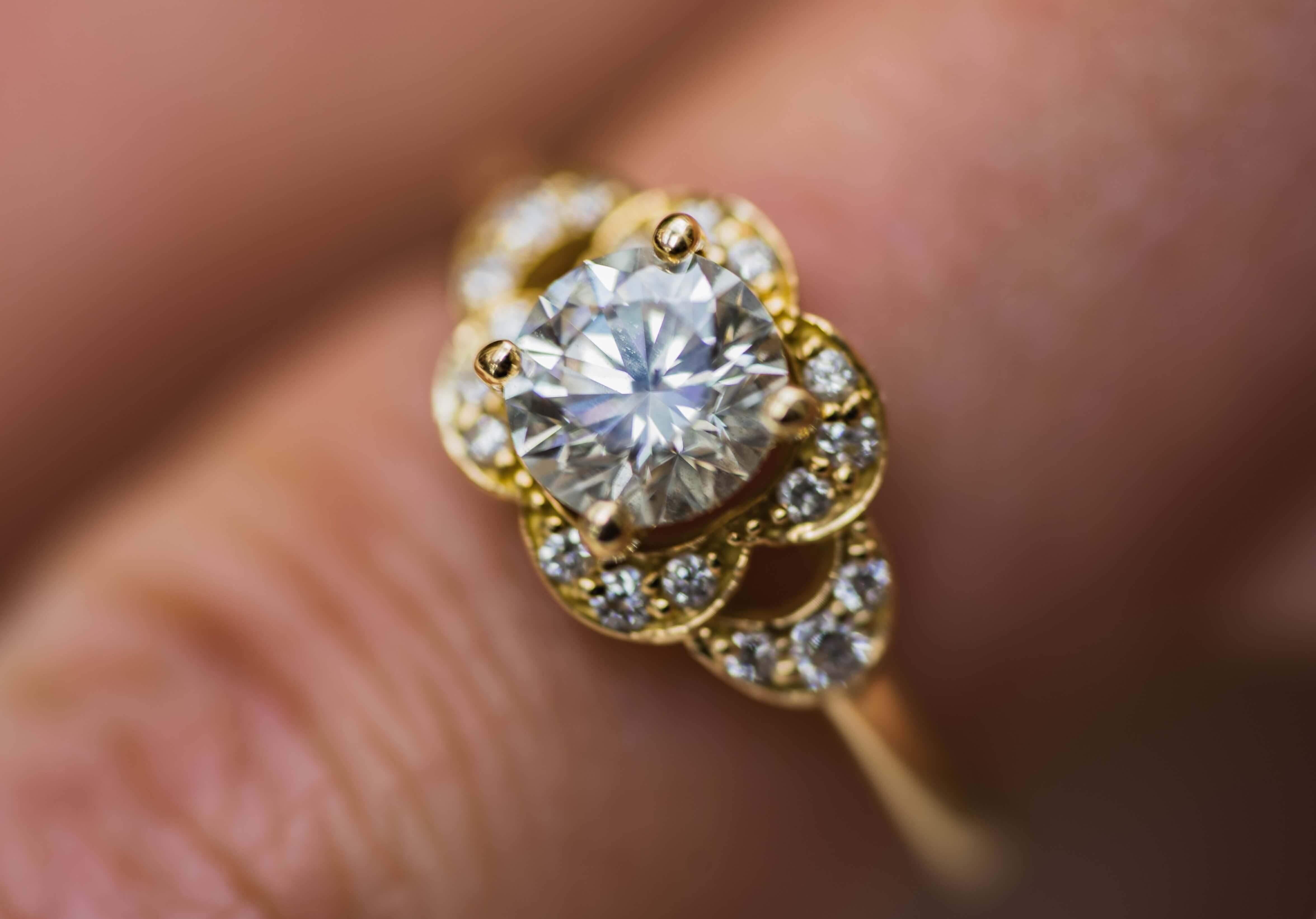
6 Pave Settings For Your Lab Diamond Engagement Ring Band
Are you looking for a ring that has an extra pop? Do you envision blinding sparkles and raging fire that’s eye-catching from all the way across the room? Do you want your engagement ring to spread the light of your love to everyone you meet?
Certainly, you might get that from an enormous diamond. But that solution will be expensive, and might not even be wearable for its massive size.
Consider, instead, in addition to a beautiful center stone, an accompaniment of small diamonds strategically placed to add that snap, sparkle and pop to your engagement ring.
Now that’s what we call pavé!
In this Michael Gabriels article, we will cover what pavé diamond settings are, the most popular ones for engagement rings, and some tips on how to make the most out of pavé and take care of it. After reading this article you should be able to shop confidently or at least have a better idea of what you’d like to incorporate into your ideal engagement ring or wedding band.

What is Diamond Pavé?
Pavé settings, (pronounced “pah-vey” and derived from the French “to pavé,”) are the use of small diamonds called “melee” to create an outline, border, design or overlay on a piece of jewelry. In this way it resembles the cobblestones used to pavé a street, hence the nomenclature.
Always in style, pavé is used extensively to add light and texture to all kinds of jewelry, such as wedding bands and especially diamond engagement rings, where its immense scintillation doesn't take the spotlight off the center stone. In fact, pavé setting features often help draw the eye towards the center stone in engagement rings.
Pavé settings are often less expensive than larger accent stones, making it an affordable alternative without sacrificing scintillation.
The small size of melee stones allows for intricate detailing and dynamic styles that can conceal the metal beneath, creating a seamless look and extra sparkle. Platinum and white gold become almost invisible under pavé settings.
What Are Melee Stones?
Did you know that melee diamonds - the tiny diamonds used to make pavé designs- are cut to the same specifications as regular-sized diamonds?
In fact, all gem-quality diamonds today, regardless of size, are extensively polished and faceted. This is one of the great advancements in the diamond industry in the past number of decades. With the help of state-of-the-art technology, cutters can now facet and polish diamonds that are less than 1/1000th of a carat to the same proportions and dimensions as diamonds of 1000 carats.
Melee stones are set by drilling shallow holes into the metal they will be set into and then gently soldering on or carving out the prongs or beads that will hold the melee down. When melee stones are set together in a row, rows, or a cluster it is referred to as a “pavé setting.”
Are Melee Stones Diamond Chips?
No, melee stones are not diamond chips, (which are essentially the detritus of the cutting process. )
Melee stones are fully faceted and polished cut diamonds that are immensely minuscule. GIA- the Gemological Institute of America- defines melee diamonds as those less than 1/5th of a carat, though in practice they can be as small as 1/1000th of a carat. Settings that use melee stone at the teeny-weeny end of the spectrum are often referred to as “micro-pavé,” since they require high magnification equipment for setting.
While most melee stones are cut as round brilliants or cushions, they come in every shape that larger diamonds are cut to.
Melee stones that are cut with only the minimum number of facets - normally around 17 or 18 - are known as single cut, while melee diamonds faceted with the full 57 or 58 facets (in the case of round brilliants) are known as - wait for it- full cut melee.
At Michael Gabriels we prefer using full-cut melee.
How Are Melee Stones Graded?
Melee stones are graded on the same 4 Cs as larger diamonds. This ensures that they can be matched with the center stone in your setting so that your ring has consistency and looks perfect from every angle and in every light.
Carat Weight vs Total Carat Weight
Melee stones are most often sold by diamond dealers in groups of tens or hundreds.
What does that mean for you?
It means that instead of giving the measurements of each and every single melee stone we get a calculation of, for example, 10 1mm melee stones weighing 1.5 total carats.
Single stones that are not melee are often recorded individually by their carat weight- so you’ll see CW on an invoice referring to the weight of the center stone, and also large accent stones.
However, melee stones are so small that instead of being individually recorded they are normally grouped together on an invoice as a set with a total carat weight- TWC- the weight of all the diamonds combined.
Micro Pavé
Micro Pavé derives its name from the use of a microscope to set the multitudes of extraordinarily minuscule melee, often as small as or smaller than 0.01carats.
Micro Pavé settings contain dozens and dozens of stones, sometimes hundreds, and on some rare occasions even thousands, individually chosen and handset by a master setter (at least in the case of Michael Gabriels and other high-end jewelers.)
Micro Pavé is used to make intricately detailed designs, or to encrust pieces on more than one side, such as trio pavé on engagement rings covering all the outwardly exposed metal of the band, or a high fashion bracelet shaped like an animal head (which made Cartier famous at the beginning of the 20th century.)
With its high diamond-to-metal ratio, micro pavé is an attention-attracting cascade of ice.
Because of the extra skilled labor and equipment involved, this tends to be a more expensive form of Pavé.
The 6 Most Popular Pave Band Settings for Engagement Rings
The most popular way to incorporate pavé into your engagement ring is definitely on your band.
Pavé bands have been a long-time staple for engagement ring designs since the early 20th century.
You may have seen pavé bands on many famous celebrity engagement rings, such as those worn by Blake Lively, Meghan Markle, Gwyneth Paltrow, Kourtney Kardashian, and Princess Biatrice.
There are many other ways to use pavé in your engagement ring besides those listed here, but the following tend to be the most popular for bands.

Shared Prong
Simple and effective, this early form of pavé is still one of the most popular. As the name suggests, small prongs are used to hold the diamonds, and each diamond melee stone shares prongs with those nearest to it. A delicate form of pavé, it allows for immense light mobility and a very diverse array of detailing possibilities, including clusters.
The main drawback of this form of diamond pavé is that it is not the most secure, so it is not well suited to people who intend to wear their ring often while pursuing an active lifestyle.
U-Cut
Another very popular pavé setting, u-cut pavé takes its name from the u-shaped

groove dug into the metal in which the diamonds are set. This setting saves metal, increasing the diamond-to-metal proportion, producing lots of light exposure and diamond visibility, and allowing greater fire, brilliance, and scintillation.
From the side, it often appears as a U-shape, though some jewelers will make it more of a V-shape. If you look at the pavé setting from the side view and it is a clean line of equally sized and shaped Us or Vs, then it is a U-cut setting.

Fishtail or French Pavé
If from the side the Pavé looks like a set of saw-teeth or like a row of fish tails sticking up in the air, then it is French or Fishtail Pavé.
Richly textured setting with a more striking appearance than U-cut, this type of setting has more personality.
Because of the multiple angles at which metal is cut out of the band to produce this effect, more light mobility is afforded to the diamonds.
The richly textured metal comes at a small expense of diamond proportion, though the striking features of the metal make up for that, and the added security makes this a form of Pavé that will withstand a more active lifestyle.
Channel Set
Channel setting is a brilliant way to make a subdued impression that still has a

unique personality to it. Set directly into thick metal walls, this setting is by far the most secure, appearing like a single, long, glittering stone between metal shields, especially when you use square or rectangular melee diamonds. This is also a great setting for those who work with their hands or live a very active lifestyle, as there are no edges to catch on.
Channel settings’ seamless look makes them one of the most popular pavé settings utilized in eternity bands.
Bright Cut

An early and very traditional style of pavé setting, Bright cut is similar to Channel settings but has different setting features, giving it a more vintage look.
With walls as thin as possible, stones are set in prongs between the walls but not set directly into the walls themselves. This allows for design details next to the stones within the walls of the bands, such as milgrain and filigree.
This setting is not as secure as Channel but is more secure than many other pavé settings.
Trio Pavé
For those who want the entire area of the exposed band to scintillate and glitter,

trio pavé is the best. Three rows of melee are laid on the band, encrusting it with diamonds, adding flashy personality to an engagement ring, wedding ring, or other jewelry. This setting style has one of the highest proportions of diamonds in relation to the exposed metal- an almost fully iced-over band.
What Are The Disadvantages of Using Pavé Settings In An Engagement Ring?
Pavé is somewhat delicate and it is very likely that some stones will fall out over a lifetime of use- however, you might not even notice the missing links. Here at Michael Gabriels we’ve even found missing stones in advertisements from other famous jewelers.
That being said, melee stones are easy to replace and reset, and part of MG customer service is to replace lost stones.
Another disadvantage is that pavé settings can be tremendously laborious to produce, so extensively intricate pavé may be quite expensive, as opposed to more simple pavé settings such as pavé bands and halos that are generally quite approachable.
Lab Grown Diamond Pave At Michael Gabriels
Michael Gabriels is a third-generation family-run jeweler with over one hundred years of experience we look forward to putting at your disposal.
We specialize in custom jewelry made using lab-grown diamonds because we feel that they are a more ethical and sustainable choice and because they are accessible to more people.
Moreover, most pavé diamonds today are made using lab-grown diamonds, which are much more economical. Gem-quality lab-grown diamonds are real diamonds, manufactured using specialized processes that mimic the conditions under which diamonds naturally develop.
Message us online or on Instagram, or come visit our showroom in Soho. You can make an appointment in advance, or walk right in. We will be happy to help in any way we can.



